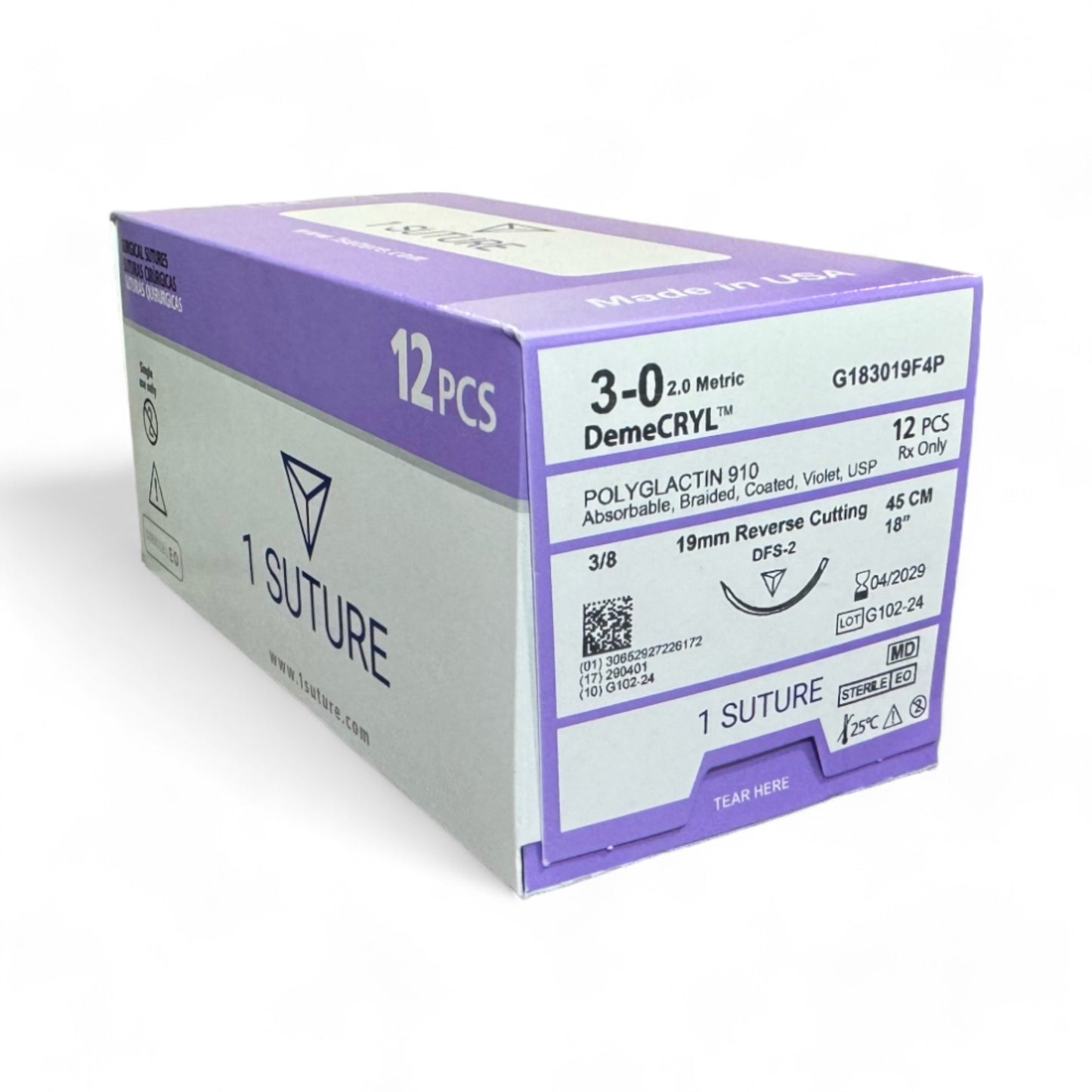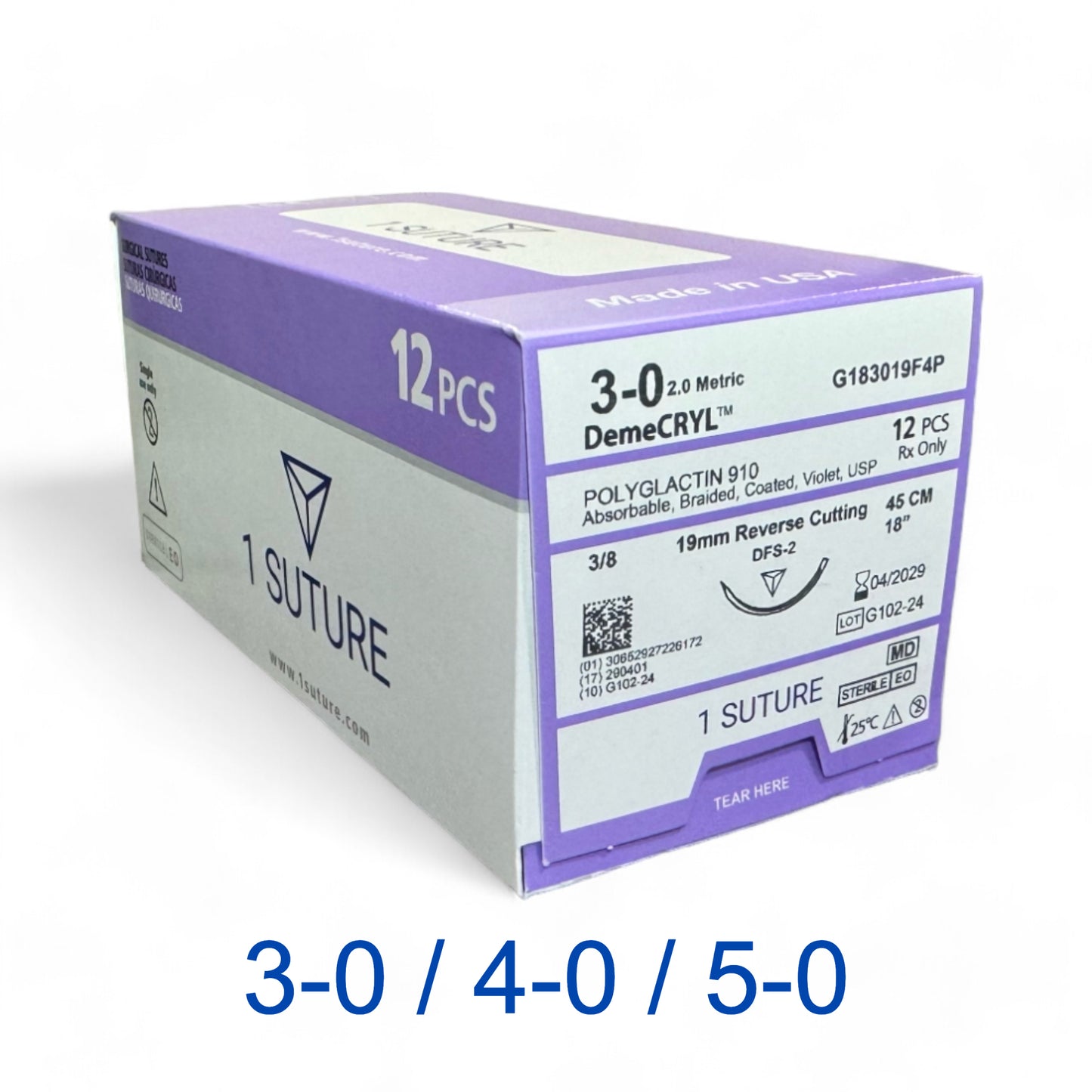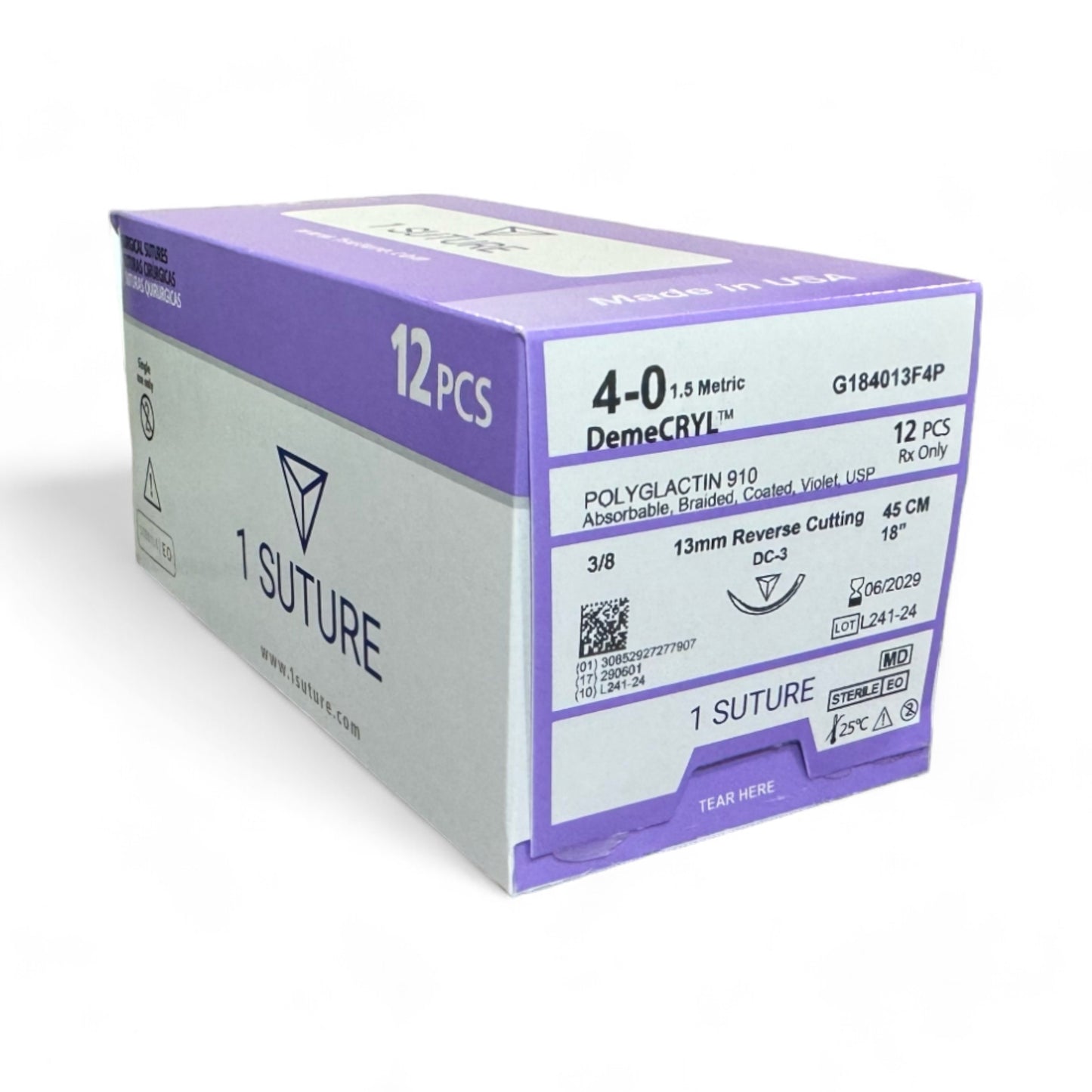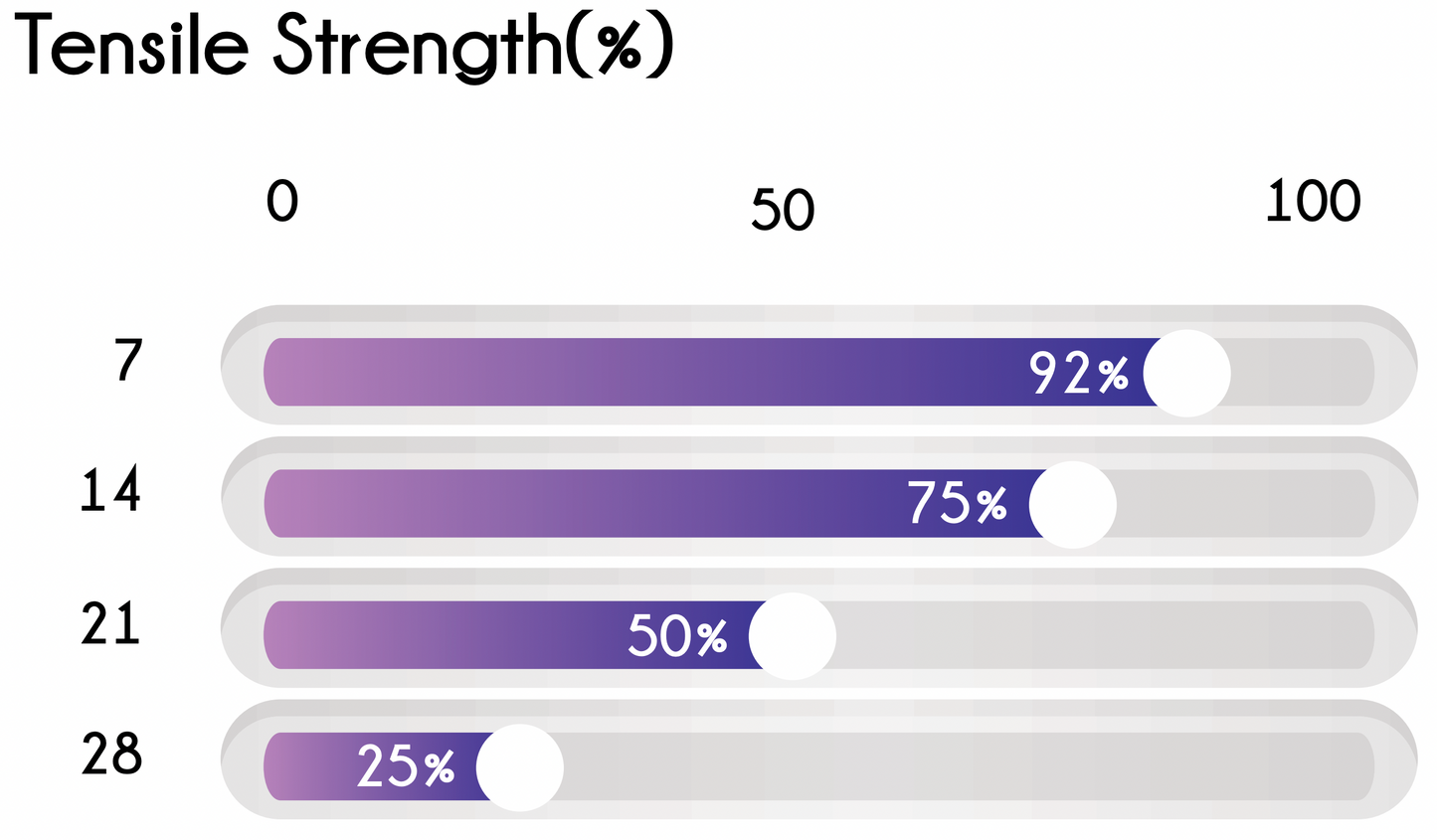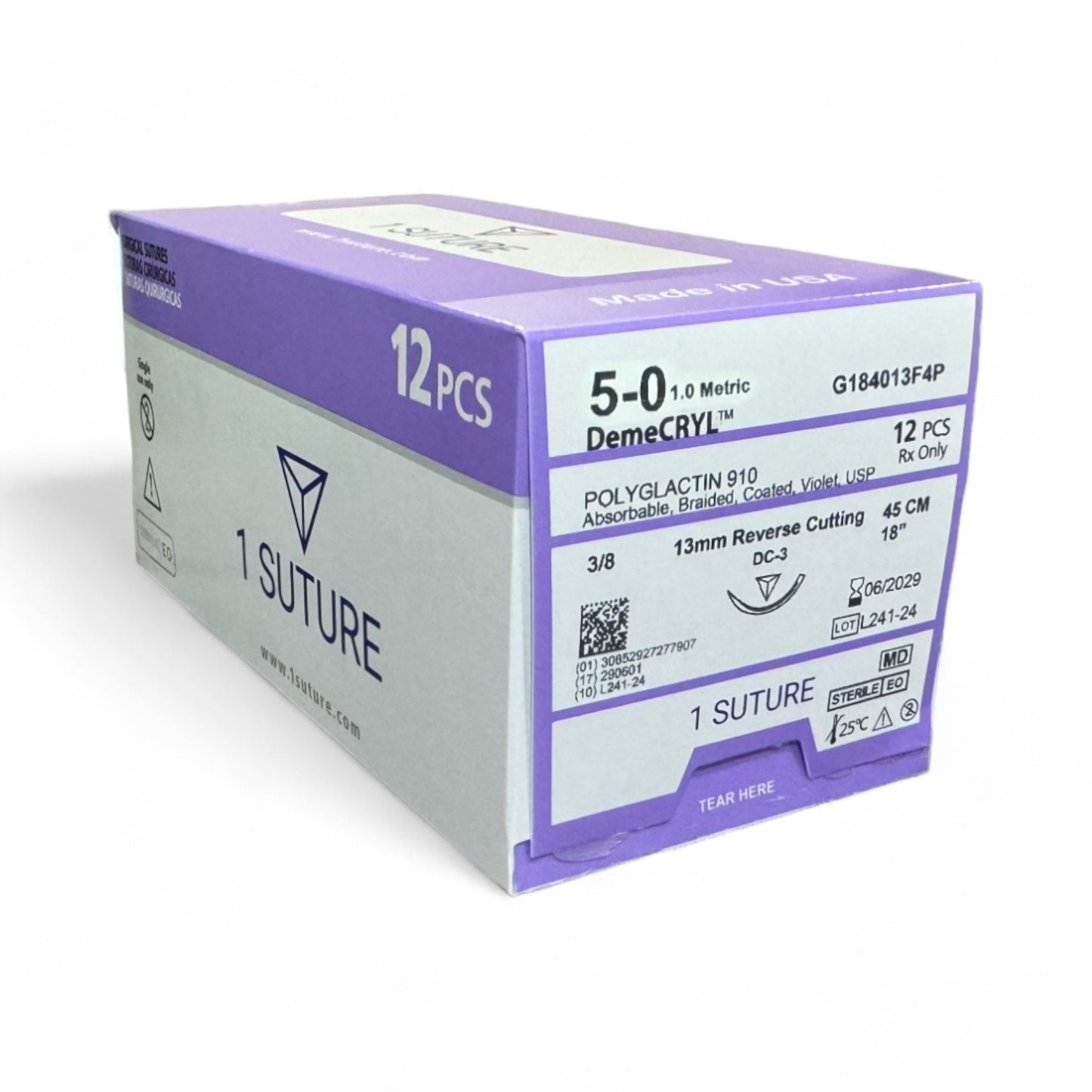Polyglactin 910 (Vicryl) Box of 12 Sutures
Polyglactin 910 (Vicryl) Box of 12 Sutures
Reverse Cutting Needle, 3/8 Circle
18 in (45 cm) Suture Thread
Made in the USA
Couldn't load pickup availability
1 Suture Advantage:
- DemeTRACK Package Design - Ready to grasp needles and innovative packaging that minimizes the memory effect seen in other suture brands, ensuring speed, smoother handling, and greater efficiency.
- 300 Series Stainless Steel Needles - Considered the gold standard for unmatched precision and strength. Crafted to perform flawlessly in every procedure.
- Made in the USA - Trust in the quality and reliability of sutures proudly manufactured in the United States, to the highest standards of excellence.
- Rapid Absorption Rates - ranks among the market's top sutures for quicker healing.
-
Equivalent or Better Than Top Selling Sutures - 1 Suture matches or exceeds the performance of leading brands.
- Competitive, Transparent Pricing - Industry leading pricing while providing the highest quality.
Needle Quality
- Sharp, high quality stainless steel.
- Rigid to resist bending and breaking.
- Slim without compromising strength.
- Penetrates tissue with minimal trauma.
- Sterile and corrosion-resistant.
Suture Characteristics
Polyglactin 910 is coated in order to create a smoother synthetic absorbable suture that will pass through tissue readily.
Coated Polyglactin 910 sutures facilitate:
- Easy tissue passage
- Precise knot placement
- Smooth tie down
- A decreased tendency to irritate tissue
- Greater tensile strength
- A longer absorption period
- After 3 weeks post operation, in clinical trials, polyglactin 910 sutures still maintain approximately 50% of their tensile strength.

About Polyglactin 910 Suture
Polyglactin 910 suture is a synthetic absorbable, sterile, surgical suture composed of copolymers made from 90% glycolide and 10% L-lactide. A slight tissue inflammation may occur when polyglactin 910 sutures are placed in tissue, which is characteristic of a foreign body response. This response is followed by gradual encapsulation by fibrous connective tissue.
Progressive loss of tensile strength and eventual absorption of polyglactin 910 suture occurs by means of hydrolysis, where the polymer degrades to either glycolic acid or glycolic and lactic acids which are subsequently absorbed and metabolized by the body.
Complete loss of original tensile strength is lost by around 5 weeks post-placement. Absorption of the suture is essentially complete between 56 and 70 days.
Share
